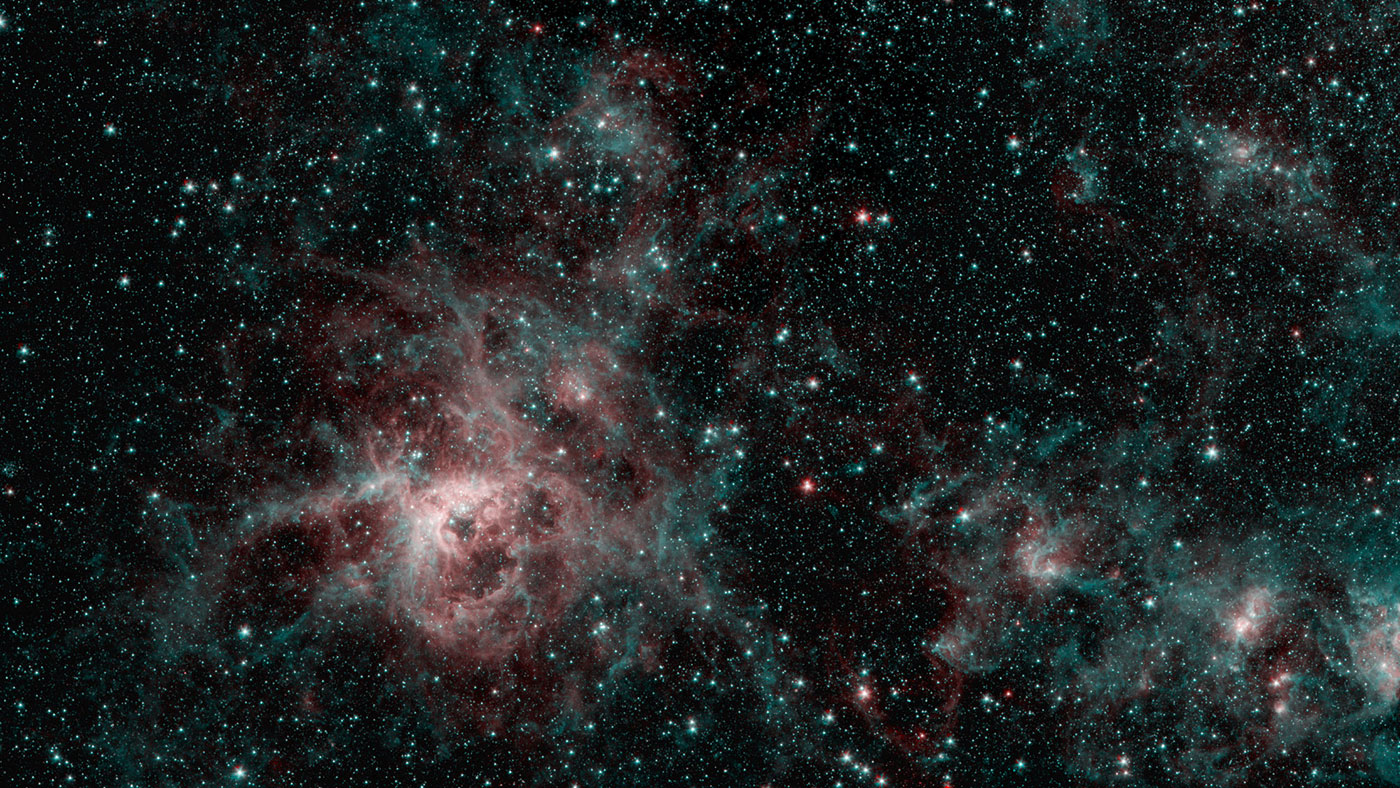
This week, NASA’s Spitzer Space Telescope ended its scientific observations after a 16-year-long mission. But the legacy of this infrared telescope lives on, and to celebrate its achievements NASA has released this striking image of the Tarantula Nebula, created from Spitzer data.
Named for its long, spindly legs which resemble a spider, the Tarantula Nebula was one of Spitzer’s first targets, imaged in 2004. The researchers thought it would be an appropriate site to return to in order to commemorate the end of the Spitzer mission.
“I think we chose the Tarantula Nebula as one of our first targets because we knew it would demonstrate the breadth of Spitzer’s capabilities,” Michael Werner, a Spitzer’s project scientist at NASA’s Jet Propulsion Laboratory who has been involved with the mission since the beginning, said in a statement. “That region has a lot of interesting dust structures and a lot of star formation happening, and those are both areas where infrared observatories can see a lot of things that you can’t see in other wavelengths.”
In this annotated version of the image below, you can see two key features of the nebula: The site of a supernova, marked as SN 1987a, and an area where massive stars form far closer to each other and far faster than elsewhere in the galaxy, called a “starburst region,” labeled R136 Cluster.

The star SN 1987a has been frequently studied as it glowed extremely brightly when it went supernova, first observed in 1987. The star “burned with the power of 100 million Suns for months,” according to NASA, and it sent out a shockwave which collided with dust and heated it so it radiated infrared light. Spitzer studied the remnant of this explosion to learn more about the building blocks of rocky planets.
Even though Spitzer is no longer operational, astronomers will continue to work through the archive of data which it has left behind to make more discoveries about the universe as seen through the infrared wavelength.



